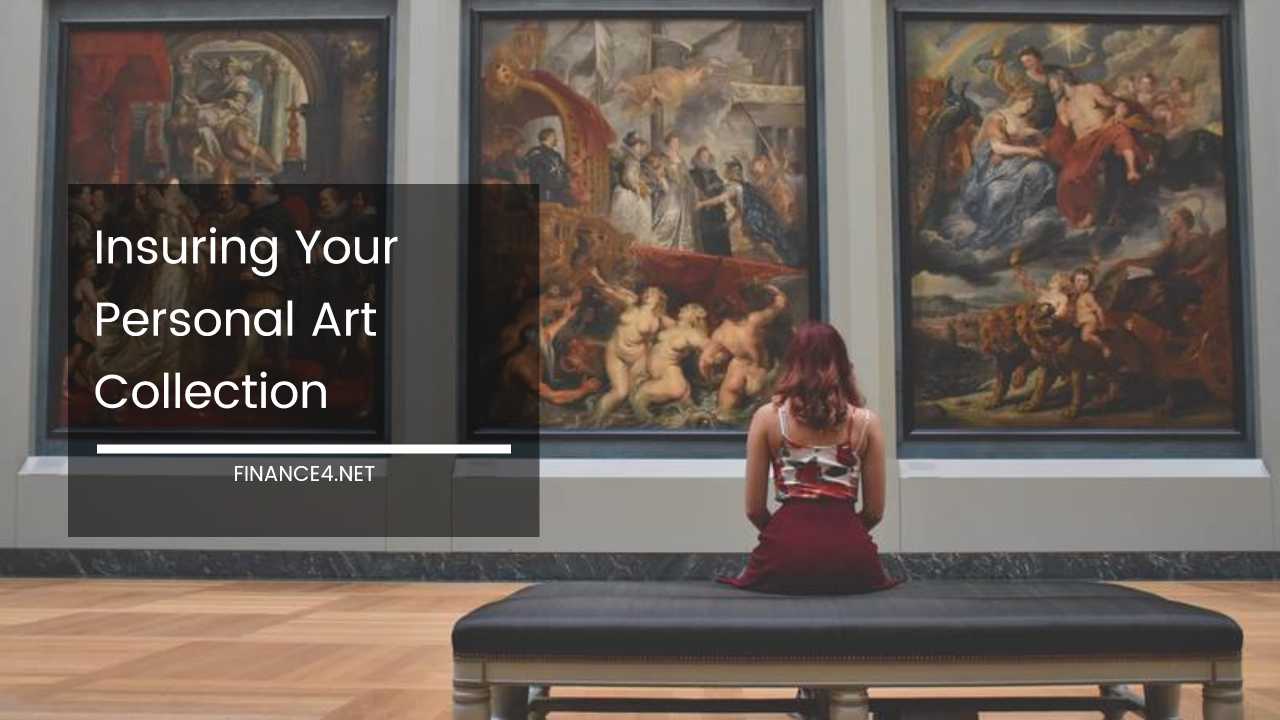Protecting Your Investment: Fine Art Insurance for Serious Collectors

Insuring Your Personal Art Collection: A Comprehensive Guide for Discerning Collectors
Owning a personal art collection transcends mere possession. It’s a curated journey, a commitment to beauty, and an investment in cultural significance.
But safeguarding these treasured pieces requires a specialized approach. Standard homeowner’s insurance often falls short for valuable artworks.
This guide delves into the intricacies of art insurance, empowering you to navigate the options and secure comprehensive protection for your collection.
Understanding the Art Insurance Landscape:
While homeowner’s insurance might cover lower-value artworks (typically under $2,000), it’s ill-equipped to handle the unique needs of a serious collection.
Enter the realm of art insurance, a specialized form of coverage designed to address the specific risks and complexities associated with fine art.
Here are the two primary ways to obtain art insurance:
- Rider to Homeowner’s Policy: This add-on provides additional coverage for your collection within your existing homeowner’s insurance. It’s a convenient option for smaller collections with moderate value, but coverage limits and exclusions might be present.
- Standalone Art Insurance Policy: This offers a more comprehensive and customizable approach. Standalone policies typically provide higher value limits, broader coverage options (including transit coverage for loans or exhibitions), and potentially lower deductibles. They are ideal for valuable collections or those with specific needs.
Factors Influencing Your Coverage:
The type of policy you choose, and the specific coverage it offers, depends on several factors that insurers consider when assessing your collection:
- Value of the Collection: Highly valuable collections often necessitate standalone policies with tailored terms and exclusions. Insurers might require detailed appraisals and implement stricter security measures.
- Type of Artwork: The medium (painting, sculpture, print, etc.) and the artist’s reputation influence coverage options. For instance, insuring a rare Picasso requires a different approach than a contemporary installation.
- Location and Security: Where your art is displayed (home gallery, private residence) and stored (climate-controlled vault, secure facility) plays a significant role. Robust security systems, fire suppression measures, and proper storage all contribute to a lower risk profile and potentially lower premiums.
- Coverage Needs: Consider the specific risks you want to mitigate. Do you need coverage for transit during loans or exhibitions? Is your collection susceptible to damage from light or humidity? Does it include fragile pieces requiring specialized restoration expertise? Tailoring your coverage to your specific needs ensures optimal protection.
Maximizing Coverage and Value:
Obtaining the right coverage goes beyond simply choosing a policy. Here are some proactive steps you can take to ensure your collection is well-protected and your insurance remains valuable:
- The Power of Professional Appraisals: Regular valuations by qualified art appraisers are essential. Detailed appraisals should include explanations of the estimated value, comparisons to similar artworks sold recently, and a clear rationale for the valuation. This documentation serves as the foundation for accurate insurance coverage and avoids potential underinsurance issues.
- Maintaining Detailed Records: Create a comprehensive record system for each piece. This includes high-quality photographs (from multiple angles), receipts of purchase, any certificates of authenticity, and condition reports. This meticulous record-keeping becomes invaluable in the unfortunate event of a claim.
- Investing in Security: Implementing effective security measures is not just about deterring theft; it demonstrates a proactive approach to risk management. Consider alarm systems with motion sensors, fire suppression systems, climate control systems, and appropriate storage solutions (e.g., light-filtering glass for light-sensitive works, secure display cases for sculptures). These measures not only protect your art but can also lead to significant discounts on your insurance premiums.
Cost-Saving Strategies for Savvy Collectors:
While protecting your art is paramount, affordability shouldn’t be overlooked. Here are ways to ensure you get the best value for your art insurance:
- Comparison Shopping is Key: Don’t settle for the first quote you receive. Obtain quotes from multiple reputable insurers specializing in art insurance. Rates and coverage specifics can vary considerably between companies. Consider independent brokers who can access a wider range of insurance providers.
- The Art of Deductibles: Choosing a higher deductible can significantly lower your premium. However, ensure you’re comfortable absorbing the deductible amount in case of a claim. Carefully weigh the financial risk against the premium savings.
- Unlocking Discounts: Many insurers offer discounts for the security measures mentioned earlier, as well as for belonging to organizations like the Art Loss Register (an international database of stolen art). Additionally, some insurers might offer discounts for storing your collection in climate-controlled facilities or using specific packing and shipping companies for art transportation. Be sure to inquire about available discounts during the quoting process.
Maintaining Coverage and Peace of Mind:
Art insurance is an ongoing process, not a one-time purchase. Here’s how to ensure your coverage remains effective: by regularly updating appraisals, maintaining open communication with your insurer, and understanding the claims process.
- Regular Appraisal Updates: The art market fluctuates, and your collection might appreciate over time. To avoid underinsurance and ensure adequate coverage, update your appraisals every 2-3 years, or more frequently for high-value pieces. Notify your insurer of any changes in value based on the updated appraisals.
- Open Communication with your Insurer: Maintain an open dialogue with your insurance company. Inform them of any changes to your collection, such as new acquisitions, de-accessions (selling or donating pieces), or loans to exhibitions. Additionally, keep them updated on any significant security upgrades you implement. This transparency strengthens the relationship and ensures your coverage remains aligned with your evolving collection.
- The Claims Process: In the unfortunate event of a loss (theft, damage, etc.), immediately contact your insurance company and follow their claim filing procedures meticulously. Having all the necessary documentation readily available, including detailed records, photographs, and appraisals, will expedite the claim process and ensure a smooth resolution.
Beyond the Basics: Specialized Considerations
For collectors venturing into more specialized areas of the art world, additional considerations might come into play:
- Fine Art Transportation: If you plan to loan pieces for exhibitions or participate in art fairs, ensure your insurance covers transit risks. This specialized coverage protects your artwork from damage or loss during transportation.
- Art in Transit: Consider a “floater” policy, which provides temporary coverage for artworks outside your primary residence, such as during loans or exhibitions.
- Conservation and Restoration: Some insurance policies offer coverage for restoration costs in case of damage. Understanding the extent of this coverage and potential exclusions is crucial.
- Collections with Unique Needs: For particularly valuable or irreplaceable pieces, or collections with specific needs, you might explore options like inland marine insurance, which offers highly customizable coverage tailored to the unique risks associated with those artworks.
Final Thoughts: A Secure Future for Your Collection
By implementing these strategies, you can navigate the art insurance landscape with confidence, securing the right coverage for your cherished collection.
Remember, art insurance is an investment in your investment. It allows you to appreciate your collection with peace of mind, knowing that your valued pieces are protected against unforeseen circumstances.
With a well-informed approach and ongoing communication with your insurer, you can ensure your collection remains a source of joy and cultural enrichment for generations to come.
Additional Resources:
- The American Society of Appraisers (ASA): https://www.appraisers.org/
- The International Art Loss Register (IAR): https://www.artloss.com/
- The Appraisal Foundation: https://www.appraisalfoundation.org/



